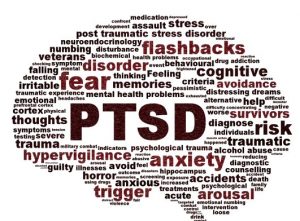(Akiit.com) Neighborhoods plagued by gun violence are often compared to war zones. Whether the comparison is fair or not,
the chances that young men who experience trauma in their neighborhood will end up in jail are astronomically high. Studies have shown a high correlation between neighborhood disorder and physical abuse.
According to the National Association for Mental Illness, some 70 percent of youths in state and local juvenile justice facilities suffer from mental health problems, which is part of a broader tre nd of prisons and jails becoming warehouses for the mentally ill. These youths are in many cases cut off from mental health care and from their communities and families; an untold number will be released back into society as hardened, unstable adults.
nd of prisons and jails becoming warehouses for the mentally ill. These youths are in many cases cut off from mental health care and from their communities and families; an untold number will be released back into society as hardened, unstable adults.
Aggravating the crisis in communities, state mental health programs lost more than $4 billion in funding from fiscal year 2009 to 2012 – a cost passed down to the hospitals and courtrooms that ultimately must absorb the burden.
Studies show about 8 percent of Americans suffer from PTSD at some point in their lives. But the rates appear to be much higher in communities, such as poor, largely African American pockets of Detroit, Atlanta, Chicago, and Philadelphia, where high rates of violent crime have persisted despite a national decline.
A growing number of programs treat post-traumatic stress disorder (PTSD) in war veterans. But far fewer treat Americans who suffer from the PTSD that comes with their ZIP code. And this kind of PTSD may be affecting even more people.
PTSD can directly hurt a person’s brain by messing with the amygdala, the part of the brain that triggers a chemical to release to help you decide between “fight or flight” in a threatening situation. If one is exposed to prolonged, repetitive, or extreme trauma, the amygdala stays in alert mode. And the neurons, the pathways to this part of the brain, lose their ability to recover.
A person’s memory becomes corrupted like a bad computer hard drive and it can hurt a person’s ability to separate new experiences and determine whether they are safe or dangerous. The longer a person stays in the hyper-vigilant mode, the greater the chance of permanent damage. In a child, damage can be magnified and lead to problems like dissociative identity disorder.
For most people, untreated PTSD will not lead to violence. But “there’s a subgroup of people who are at risk, in the wrong place, at the wrong time, of reacting in a violent way or an aggressive way, that they might not have if they had had their PTSD treated,” according to Dr. Kerry Ressler, a medical investigator and psychiatrist, who studied this issue extensively.
Researchers at Drexel University in Philadelphia found that people with symptoms of PTSD may be more likely to carry a weapon in order to “restore feelings of safety.”
Hospital trauma centers, which work on the front lines of neighborhood violence, could help address this lack of treatment. Indeed, the American College of Surgeons, which sets standards for the care of patients with traumatic injuries, recommends that trauma centers “evaluate, support, and treat” patients for post-traumatic stress. A trauma center is a hospital equipped and staffed to provide care for patients suffering from major traumatic injuries such as falls, motor vehicle collisions, or gunshot wounds. In light of the plethora of violence injuries from guns and other weapons, we know all too well that it is inexcusable that more of these hospitals aren’t providing the care and treatment of the PTSD that is ever-present in these situations.
But it’s not a requirement, and few hospitals appear to be doing it.
The website, ProPublica surveyed a top-level trauma center in each of the 22 cities with the nation’s highest homicide rates. Just one, the Spirit of Charity Trauma Center in New Orleans, currently screens all seriously injured patients for PTSD. At another, Detroit Receiving Hospital, psychologists talk with injured crime victims about PTSD.
Trauma must be recognized as a disease process. It is also age dependent; the youngest are most vulnerable. Like heart disease and cancer, trauma has identifiable causes, established means of treatment, and defined means of prevention. But unlike heart disease, trauma is communicable. People injure other people. Injury from behaviors associated with untreated PTSD is not an accident; it is a predictable and preventable disease.
Remember, I’m not a doctor. I just sound like one.
Columnist; Glenn Ellis
Official website; http://www.glennellis.com









Leave a Reply